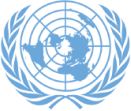First, my congratulations to the Multidimensional Poverty Peer Network and my appreciation to the Government of Panama for hosting this high-level side event.
Allow me to share with you our experience in eradicating poverty and why we think the MPI can help in achieving this.
Eradicating poverty has long been the goal of many administrations. And, for most of them, this goal has been elusive. The exception is the period between 2012 and 2015, when incidence of poverty declined by almost 4 percentage points. A recent study by the WB (2018) has attributed this reduction to “(a) an increase in wage income and movement of employment out of agriculture, (b) government transfers, and (c) remittances from domestic and foreign sources.” Note that all these reasons have to do with increased incomes, which is quite expected, given that poverty incidence in the Philippines is determined using income per capita.
Despite the real increase in income and the graduation out of poverty of a significant number of Filipinos, as implied by the statistics, there remains the spirit of discontentment. There are some who even challenge the integrity of the poverty data. And perhaps, it can be challenged on so many levels – determination of the minimum food needs, estimation of the food line, estimation of the engel ratio, etc. In fact, for peasant households, total income is only crudely estimated. My own take in all these protestations is that perhaps we are reporting the wrong metric.
Back in 2015, our agency, the National Economic and Development Authority sought to determine the aspirations of Filipinos over the long term, a span of 25 years. We conducted a nationwide survey where we asked respondents, numbering 10,000 what they want to be, to do and to have by 2040. This is the essence of human development, according to Amartya Sen.
We have summarized the results into three broad aspirations: to enjoy strongly-bonded relationships, to live a comfortable lifestyle and to feel secure about the future. Clearly, increasing income is but one of the many factors that figure into the aspirations of Filipinos. Even then, this income should translate into a comfortable lifestyle before it can produce the desired level of satisfaction. This also means that cash transferred to the poor without regard for their access to the good or service that will make life comfortable, like water and sanitation, is simply not good enough.
It may seem then that a better metric would be to determine just how many Filipinos are already living the lives they want. But this measure is too subjective and may not find an isomorphic translation into the real line. And for us, policymakers, what we need is a measure that will guide the allocation of scarce public resources. Some of these aspirations may be too lofty, already bordering on luxurious.
The multidimensional poverty index (MPI) presents itself as an alternative measure of poverty. Actually, I would say that it is more relevant in depicting poverty as it is closer to the concept of a comfortable lifestyle; if you are multidimensionally poor, then you are not enjoying a comfortable lifestyle. It is also ideal for identifying the poorest of the poor, as it depicts multiple deprivations. It also provides an objective method for identifying beneficiaries of targeted assistance programs. In addition, it makes for easier and less expensive data collection.
The Philippines has been an early follower of the research on multidimensional poverty index. Our adoption of the measure has been taking some time because the introduction of this concept coincided with the restructuring of our statistics agency. The good news, though, is that the MPI concept and methodology is ready to be presented to the Board of the Philippine Statistics Authority by the fourth quarter of this year. Hopefully, the PSA can report periodically on this measure beginning next year.
At the same time, we are proceeding with the baseline survey of the AmBisyon, sans an aggregate index. This will then complete the picture of incomes, outcomes, and perception of well-being of individuals and families. If sufficiently disaggregated, these can be analyzed alongside the different contexts of markets, the macroeconomy, the physical environment, and so on, perhaps gaining a better understanding of what works and what does not. Only then will we be able to report gains in reducing poverty and have the people confirm it.
Thank you.


